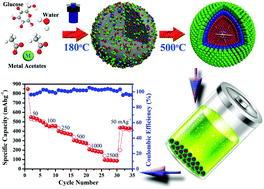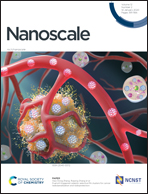Synthesis of ternary metal oxides as positive electrodes for Mg–Li hybrid ion batteries†
Abstract
Rechargeable magnesium-ion batteries (MIBs) have emerged as promising energy storage systems owing to their highly stable magnesiation and de-magnesiation processes and high theoretical energy density. However, MIB technology is restricted by sluggish Mg2+ ion transportation inside the host cathode due to large impedance. Herein, a rechargeable Mg–Li hybrid ion battery (MLIB) is presented to achieve fast Mg2+ ion stripping/plating at a magnesium anode and Li+ ion intercalation/de-intercalation in a ternary transition metal oxide cathode. The (NiMnCo)3O4 multi-shelled hollow spheres prepared by a one-step hydrothermal method followed by thermal treatment were employed as a positive electrode in a Mg–Li hybrid ion battery, with a magnesium metal anode and all-phenyl-complex based dual ion electrolytes. The resulting prototype MLIB delivered a reversible capacity of 550 mA h g−1 at a current density of 50 mA g−1, which is significantly higher compared with reported MLIBs. Furthermore, the prototype MLIB exhibited an affordable specific energy (368 W h kg−1) and cycle life (a capacity of 277 mA h g−1 was retained even after 100 cycles at 100 mA g−1). The significant improvement in the electrochemical performance of the MLIB is achieved via rational design of the (NiMnCo)3O4 cathode with a reduced Li+ ion diffusion length and stable deposition/dissolution of Mg at the anode without the occurrence of side reactions. Furthermore, ex situ XRD, SEM, ICP and EIS techniques were used to understand the reaction kinetics of guest ions inside the (NiMnCo)3O4 hollow sphere cathode.



 Please wait while we load your content...
Please wait while we load your content...